When it comes to indulging in a delicious steak, filet mignon is a popular choice among many meat lovers. Known for its tenderness and rich flavor, this prized cut of meat is often associated with upscale restaurants and luxurious dinners. However, have you ever wondered what part of the cow is filet mignon? Understanding the cow’s anatomy and where different cuts of meat come from can help you appreciate the craftsmanship and knowledge behind preparing a delectable steak. In this article, we will delve into the origins of filet mignon and explore the unique characteristics that make it one of the world’s most sought-after cuts of beef.
The History Behind The Name “Filet Mignon”
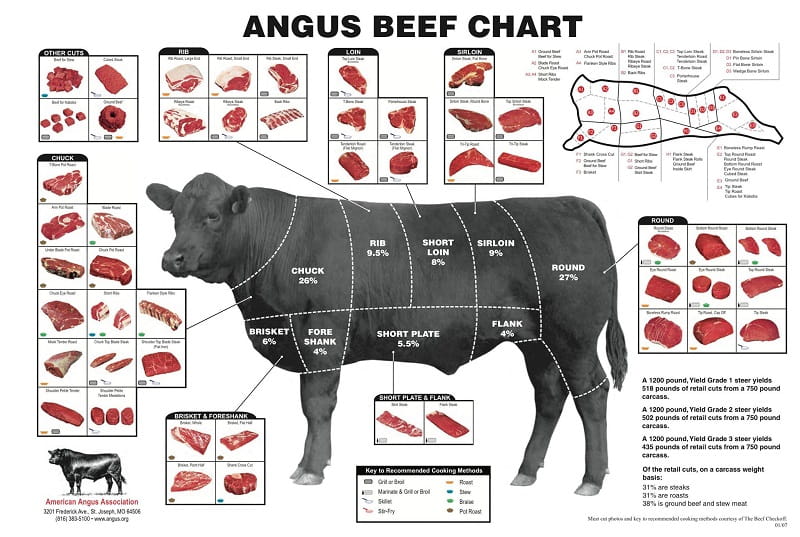
In fine dining, few dishes have a more iconic name than filet mignon. But what’s the history behind its moniker? How did this beef cut become known as “filet mignon”?
The name “filet mignon” can be traced back to 19th-century France. Filet mignon is French for “dainty fillet,” – and it’s believed that the dish was first served in Parisian restaurants. The cut of beef used for filet mignon is quite small and delicate, which is why it was given the name “mignon” – French for “dainty” or “cute.
The dish soon spread to the United States, becoming popular in upscale restaurants. The French-style beef preparation – that is, with butter and herbs – became a favorite among diners. Chefs around the country began to adopt the French name for the dish, so the name “filet mignon” was born.
Today, filet mignon is a popular dish in restaurants around the world. It’s a staple of steak houses and gourmet restaurants alike. The cut of beef may have changed over the years – with some chefs opting for thicker slices and others sticking with the traditional thin cut – but one thing remains the same: the name “filet mignon.”
What Part Of The Cow Is Filet Mignon?
Filet mignon is cut from the muscle that runs along the spine of a cow, known as the tenderloin. It’s a long, narrow, cylindrical cut of meat, and while other cuts of beef can be tender, the tenderloin is the most tender of them all. The tenderloin is also the most expensive cut of beef, and it’s easily recognizable by its cylindrical shape.
The tenderloin is the most tender part of the cow because it’s not used for much physical activity. It’s not used for movement and is rarely used for muscle development, so it remains tender and full of flavor. The tenderloin is located near the back of the animal, right behind the rib area. It’s a small meat, typically weighing 6 to 12 ounces.
When you purchase filet mignon, it’s usually cut into about one-inch thick steaks. The steaks are usually grilled, broiled, or pan-fried. Because of its delicate flavor, filet mignon is best cooked at low temperatures to remain succulent and juicy.
What Is The Ideal Size Of A Filet Mignon?
According to factual data, the best thickness for a filet mignon is around 1.5 to 2 inches. While you can find filet mignon steaks at almost any thickness, the most tender and delicious ones are usually around this size. It’s essential to use a sharp knife to cut the tenderloin center into steaks; the average size of a filet mignon is around 8 ounces. However, you may find smaller or larger cuts on the market.
Is Filet Mignon The Most Tender Cut Of Beef?
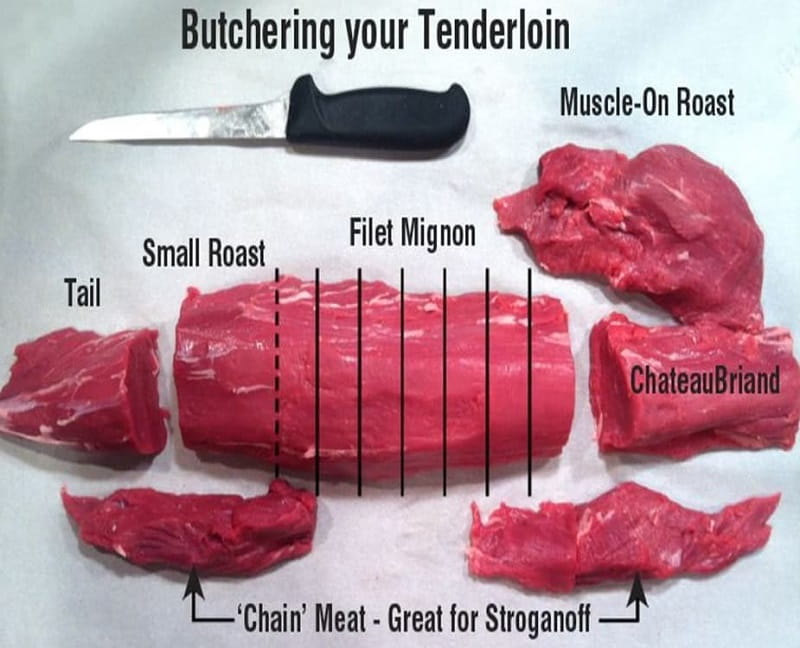
The answer is both yes and no. Filet mignon is certainly one of the most tender cuts of beef, but it’s not the only one. Several other cuts of beef can be just as tender as filet mignon, depending on how they’re prepared.
Let’s start with filet mignon. As the name implies, this cut of beef is taken from the tenderloin, which is the most tender part of the cow. It’s known for its buttery texture and delicate flavor. When cooked properly, it can be one of the most succulent cuts of beef available.
However, other cuts can be just as tender as filet mignon. Ribeye steaks, sirloin steaks, and even certain brisket cuts can all be as tender as filet mignon. It all comes down to how you prepare the cut of beef. For example, a ribeye steak should be cooked on high heat for a short time to get the most tender texture.
In the end, it all comes down to personal preference. Some people prefer the flavor and texture of filet mignon, while others may prefer the rich flavors of a ribeye or sirloin steak. It’s up to you to decide which cut of beef is best for you.
How Does The Flavor Of Filet Mignon Compare To Other Cuts Of Beef?
First of all, filet mignon is incredibly tender. It has a buttery texture, and because it is so lean and fine-grained, it will melt in your mouth. This makes filet mignon a great choice for steak lovers who don’t care for the tougher texture of other cuts.
In terms of flavor, filet mignon is mild and delicate. It has a subtle nutty flavor, and it pairs well with a variety of sauces and seasonings. It is also great for marinating because its mild flavor allows all marinade flavors to come through.
When it comes to other cuts of beef, filet mignon stands out for its tenderness and flavor. Ribeye steak, for instance, is known for its beefy flavor, while sirloin is known for its juicy texture. Both are flavorful cuts but lack filet mignon’s buttery texture and delicate flavor.
T-bone steak is another popular cut of beef, but it is not as tender as filet mignon. Additionally, t-bone steak has a much bolder flavor than filet mignon. It pairs nicely with bold seasonings and sauces but can overpower the more delicate flavors of filet mignon.
How Many Filet Mignons in Each Cow?
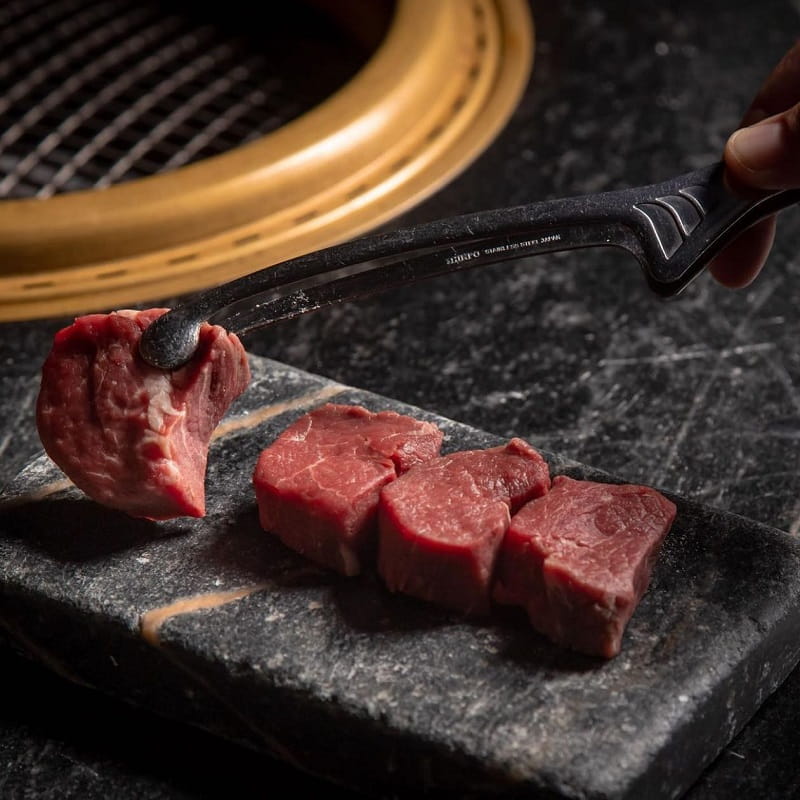
One interesting fact about cows is that each contains two filet mignons, typically taken from the smaller end of the tenderloin or psoas major muscle. These cuts are very popular due to their tender texture and delicious flavor. While the size of each filet mignon can vary depending on factors like the cow’s weight and breed, the average serving size is around 4 ounces. Despite being a small portion of the cow, filet mignon is often considered the best-tasting part.
What Makes Filet Mignon Top-Grade Meat?
It comes from the tenderloin, which is one of the least worked muscles in the animal and contains very little connective tissue, resulting in a very tender cut. In addition, filet mignon is known for its fine, buttery texture and mild flavor, making it a favorite among meat enthusiasts. It is also known for its lean nature, as it has less fat than other cuts of beef. However, this does not mean that it lacks flavor.
The minimal fat content of filet mignon allows the meat to absorb the flavors of any accompanying seasonings, making it a versatile choice for any dish. These characteristics make filet mignon a top-choice cut of meat for high-end restaurants and special events.
How Can You Tell If A Piece Of Filet Mignon Is Fresh And High-Quality?
Following these tips ensures you buy the highest quality filet mignon for your meal.
The first thing to look for when buying filet mignon is its color. The meat should be a light red, with a hint of pink. If it’s too dark or too light, it may have been mishandled or stored for too long. It would help if you also looked for consistent marbling, which is the streaks of fat that give it flavor and juiciness.
Another important factor to consider is the texture of the meat. The filet should be firm but not tough. If you press your finger into the meat, you should be able to feel the muscle fibers. If the meat feels overly soft or mushy, it may be spoiled.
The smell is also a good indicator of the freshness of the filet mignon. It should have a mild, pleasant aroma with no sign of sourness. If it smells off or like ammonia, it’s not fresh.
It’s also important to ask the butcher about the origin of the filet mignon. If it’s from a local farm, you can be confident that it’s fresh and high-quality. If it’s from a large meat-processing plant, it may not be as fresh and of the same quality.
Finally, checking the expiration date is good if you buy a pre-packaged filet mignon. If it’s close to the expiration date, it’s generally best to avoid it.
Read more:
- What Part Of The Cow Is Ribeye
- Meat Lover’s Guide: How Many Ribeyes In A Cow?
- What Part Of The Cow Is Brisket
Why Is Filet Mignon So Expensive?
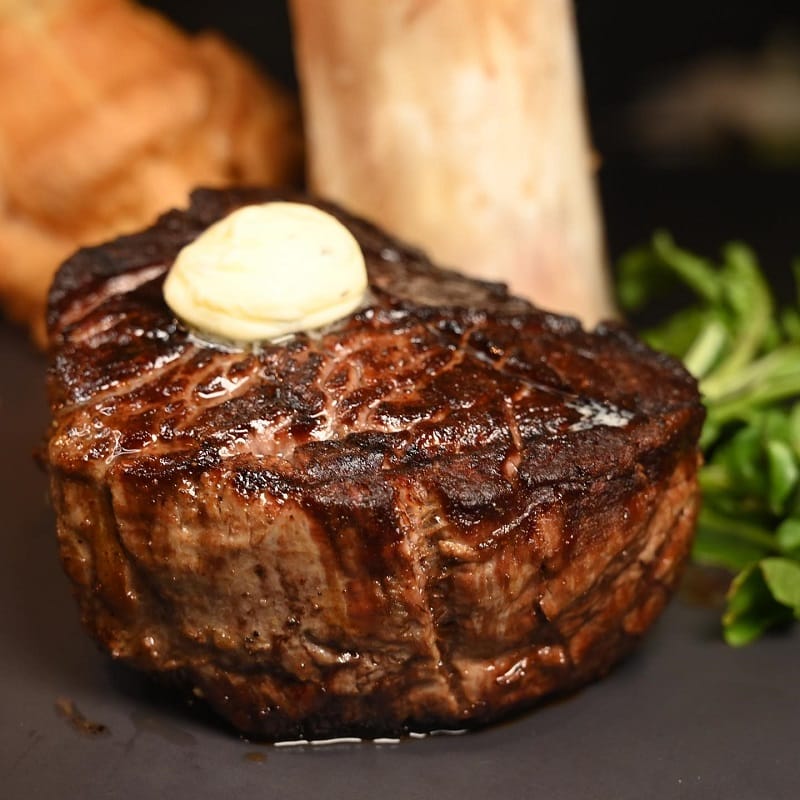
As it turns out, several factors contribute to why filet mignon is so expensive. First and foremost, it’s a very tender cut of beef. The filet mignon is cut from the tenderloin, the cow’s leanest and most delicate part. It’s also the most expensive cut of beef because of its tenderness and lack of fat. Filet mignon is usually sold in small portions, which drives the cost.
Another factor that makes filet mignon expensive is the cost of production. The tenderloin is a small muscle, so it takes skill and precision to trim it properly. This means it’s more expensive for the butcher to prepare the filet mignon than other beef cuts.
Finally, filet mignon is often served in upscale restaurants, which adds to the cost. Restaurants must charge more for the dish to cover the labor and ingredients used to prepare it.
What Are Some Popular Dishes That Feature Filet Mignon?
Let’s look at some of the most popular dishes featuring Filet Mignon.
1. Beef Wellington
Beef Wellington is a classic dish that features a juicy and flavorful Filet Mignon wrapped in a puff pastry crust. This tender steak is baked perfectly, creating a unique, flavorful, and visually stunning dish. Beef Wellington is the perfect dish for a special occasion or as a main course for a large gathering.
2. Coffee-rubbed Filet Mignon
Coffee-rubbed Filet Mignon is a modern take on a classic. The steak is marinated with coffee grounds, garlic, and herbs, creating a unique and flavorful dish. This steak is seared in a hot skillet, creating a crunchy exterior and a juicy interior. Coffee-rubbed Filet Mignon is perfect for anyone searching for something a bit different.
3. Filet Mignon with Béarnaise Sauce
Filet Mignon with Béarnaise Sauce is a French classic that is sure to impress. This juicy steak is served with a creamy, buttery sauce made with egg yolks, butter, and herbs. The sauce adds a rich and creamy flavor to the steak, creating a luxurious dish that is perfect for a romantic dinner.
4. Pot Roast
Pot Roast is a classic dish that is perfect for a family meal. This hearty dish features a Filet Mignon cooked in a flavorful broth and vegetables. The steak is then covered with potatoes, carrots, and onions, creating a classic comfort food dish. This dish is perfect for warming up a cold winter evening and will impress all your guests.
Filet Mignon is a popular cut of beef that is often used in all kinds of recipes. From classic dishes like Beef Wellington to modern twists like Pot Roast, this delicious cut of beef is sure to add a touch of elegance to any meal.
Filet Mignon Steak Cooking Guides
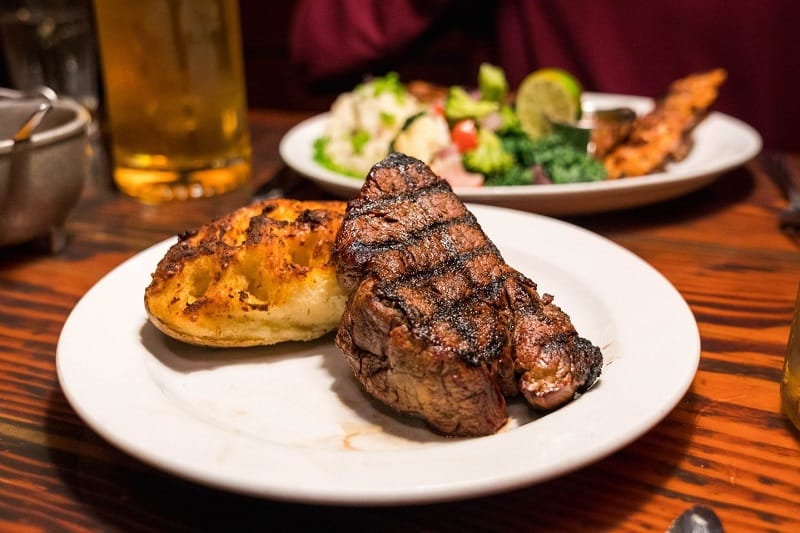
This guide will show you how to prepare the perfect filet mignon steak. We will cover the essential steps to ensure you always get the perfect steak. You’ll find everything you need to complete the job, from ingredients to tools.
First, let’s start with the basics. To ensure the best results, starting with the freshest ingredients is essential. Look for filet mignon that is bright red with a consistent texture throughout. Avoid any files that have dark spots or are slimy. You should purchase the steaks no more than three days before you plan to cook them.
Once you have the filet mignon, you’ll need to season it. Rubbing the steak with salt and pepper is the best way. This will help to bring out the flavor and ensure the steak cooks evenly. You can add other seasonings to the rub, such as garlic, paprika, or herbs.
When cooking the steak, you’ll want to use a cast-iron skillet. Cast iron is the perfect choice for cooking steak because it retains heat well and allows it to cook evenly. Preheat the skillet to medium-high heat and add a tablespoon of butter or oil to the pan. Once the butter or oil is hot, add the steak and sear each side for one minute.
Once the steak is seared, reduce the heat and cook it for 3-4 minutes per side or until it reaches your desired degree of doneness. For medium-rare, the steak should reach an internal temperature of 135°F. For medium, it should reach 140°F, and for medium-well, it should reach 145°F.
Once you’ve reached the desired temperature, remove the steak from the pan and let it rest for 5 minutes. This will help the steak retain its juices and ensure you get the most flavor.
Does The Fat Content In Filet Mignon Make It Unhealthy Compared To Leaner Cuts Of Beef?
When it comes to beef, filet mignon is often seen as the crème de la crème of cuts. But with its higher fat content, is filet mignon all that healthy compared to leaner cuts of beef?
Let’s start by looking at the fat content in filet mignon. It has a 15-20% fat content, putting it in the “high fat” beef category. This is significantly higher than other cuts of beef, such as sirloin, which has a fat content of around 5-7%.
So does this make filet mignon unhealthy? The answer is no. Despite its high-fat content, filet mignon is still a leaner cut of beef compared to other cuts with a lot more marbling. This marbling is the fat found inside the muscle and increases the beef’s fat content.
In addition, filet mignon is a good protein, iron, and zinc source. It also contains a significant amount of B vitamins essential for a healthy diet.
When it comes to health benefits, it is essential to remember that all foods should be consumed in moderation. Eating too much of any food can lead to health risks. However, when consumed in moderation, filet mignon can provide some health benefits.
For instance, filet mignon is an excellent source of healthy fats. It contains monounsaturated fats, which are good for your heart and help lower cholesterol. It also contains omega-3 fatty acids, which can help reduce inflammation and protect against heart disease.
When it comes to leaner cuts of beef, they are generally lower in fat and calories but also lower in some of the healthy fats that filet mignon has to offer. That being said, leaner cuts of beef can still provide some health benefits, depending on how they are prepared.
Overall, filet mignon is a great option for anyone looking for a leaner cut of beef with some health benefits. While it is higher in fat than other cuts, this fat is largely beneficial and can be enjoyed in moderation. Always speak with a doctor or nutritionist about the best way to enjoy beef as part of a healthy diet.
How Does The Quality Grade Of The Beef Affect The Taste And Texture Of Filet Mignon?
The quality grade of beef measures how tender and flavorful the meat is. The United States Department of Agriculture (USDA) grades all beef, from prime to select to standard, based on the amount of marbling, or fat, found in the meat. Marbling plays an important role in the flavor and juiciness of the steak. The higher the grade, the more marbling and the better the flavor.
The USDA also grades beef based on age, affecting the steak’s tenderness. Younger beef is more tender, while older beef can be tougher. The age of the meat, along with the grade, affects the texture and taste of the filet mignon.
When it comes to filet mignon, the grade of the beef has a major impact on the taste and texture. Prime beef is the highest grade and most expensive but has the most intense flavor and tender texture. Select beef is a step-down and is a bit less tender but still has a good flavor. Standard beef is the lowest grade and is usually the least expensive, but it can still produce a flavorful steak.
No matter which grade of beef you choose, the key to an excellent filet mignon is a good cooking technique. High-heat cooking, such as grilling or searing, is the best way to bring out the flavor of the meat. Be sure to season the steak generously with salt and pepper, and let it rest for a few minutes before serving.
Are There Any Alternative Names For Filet Mignon?
There are several alternative names for Filet Mignon, a popular cut of beef known for its tender and juicy texture. Chateaubriand is a premium cut taken from the same part of the cow as Filet Mignon and is a satisfying alternative. Other suitable options include the porterhouse, T-bone, and striploin steaks, which offer a similar flavor and texture.
What Part Of The Cow Is Filet Mignon – FAQs
What Type Of Wine Pairs Well With Filet Mignon?
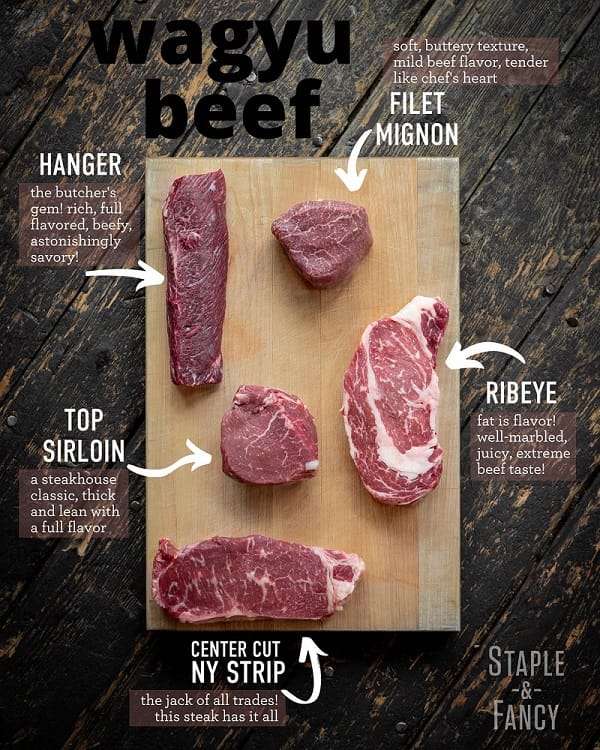
If you’re going to grill a delicious filet mignon, it’s essential to choose the right wine to go with it. Based on factual data, red wines with soft tannins best match this tender and lean cut. Cabernet Sauvignon and Bordeaux are excellent choices for a juicy, medium-rare filet mignon. For a lighter approach, Pinot Noir is also a great option. Choosing a wine that won’t overpower the delicate flavors of the steak is important. By selecting the right wine, you can enhance the flavors of your filet mignon and elevate your dining experience.
What Are Some Vegetables Or Side Dishes That Pair Well With Filet Mignon?
There are various options when pairing vegetables or side dishes with filet mignon. For green vegetables, options like easy lemon-ginger spinach or stovetop Brussels sprouts hash with crispy sage and walnuts can be excellent. A salad consisting of baked sweet potato wedges can complement the dish. Roasted petite carrots and teriyaki haricot verts green beans are other options.
Additionally, potatoes au gratin and delicious, creamy mashed potatoes can also be great choices. Cutting denser vegetables like potatoes and carrots optimally ensures they cook uniformly. Ultimately, it is up to personal preference and taste. One can experiment with different types of vegetables or side dishes to find the perfect pairing for their filet mignon meal.
Is The Age Of The Cow A Factor In The Quality Of Filet Mignon?
The cow’s age is a significant factor in the quality of filet mignon. As cows age, their muscles become tougher, making it challenging to achieve the desired tenderness of filet mignon. The most desirable filet mignon comes from young cows, around 12 to 18 months old, with lean meat and a subtle flavor. Older cows have more distinctive flavors but tougher meat, making cooking difficult without compromising its texture.
The USDA grading system also considers the cow’s age, as it determines the degree of maturity of the carcass, which affects the quality of the meat.
What Are Some Recommended Wine Pairings For Filet Mignon?
When choosing a wine to complement Filet Mignon, it is important to consider the steak’s level of fat, seasoning, and texture. Red wines are generally the best pairing for Filet Mignon, with Pinot Noir being the most widely recommended. Other red wine varieties that pair well with this steak include Cabernet Sauvignon, Bordeaux blend, and Merlot.
Sweet rather than dry wines are recommended to produce the best texture, as tannins tend to make leaner meats feel creamy in the mouth. It is also important to consider the marination or seasoning of the steak when selecting a wine pairing. For a Filet Mignon with a richer mouthfeel, a stronger flavored wine such as Cabernet Sauvignon or aged Bordeaux would be a better choice.
Finally, Pinot Noir or Merlot are excellent options for those who prefer a lighter wine with their steak.
Conclusion
The filet mignon is cut if you are looking for the most tender and juicy steak. It comes from the most tender muscle on the cow and is cut from the most minor end of the tenderloin. When cooked, it has a buttery texture and delicate flavor, making it an excellent choice for any steak lover.
Do you have any questions on what part of the cow is filet mignon? Let us know in the comments below.
References:
- https://www.crowdcow.com/steaks/filet-mignon
- https://en.wikipedia.org/wiki/Filet_mignon
- https://www.thekitchn.com/20-side-dishes-to-serve-alongside-a-juicy-steak-228287
- https://www.mychicagosteak.com/steak-university/filet-mignon-wine-pairing

Hey readers! Chip Holland here, and I’m a Manager of this website. My passion for writing about it only matches my passion for BBQ. Follow my blog for mouth-watering recipes, tips, and tricks for the perfect smoke, grill, and BBQ. I’m sure you won’t be disappointed!
